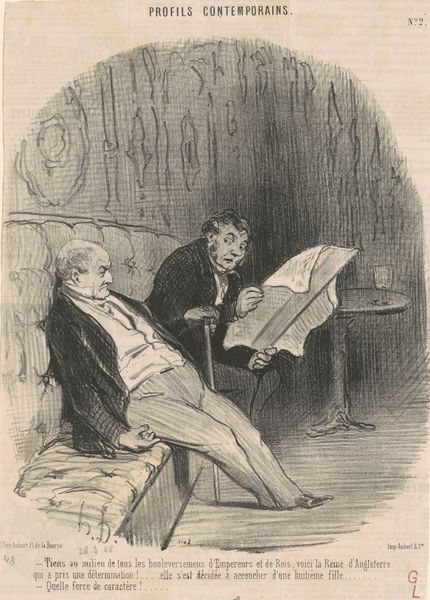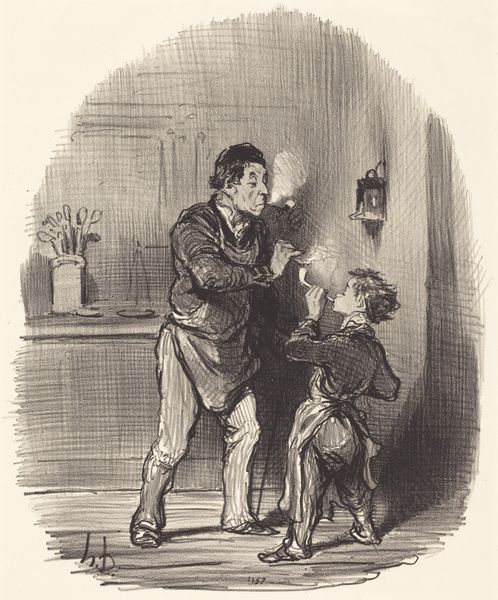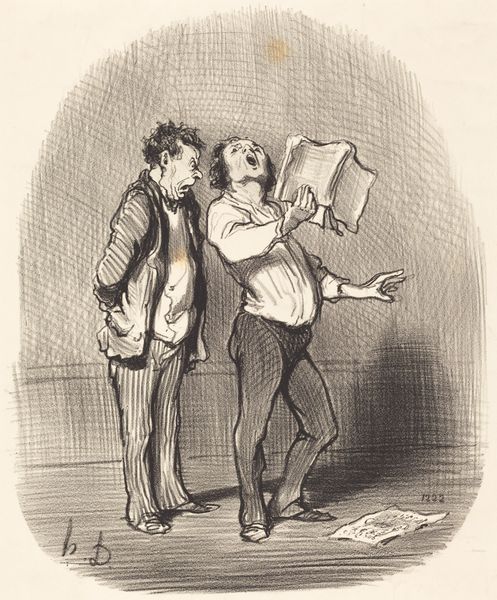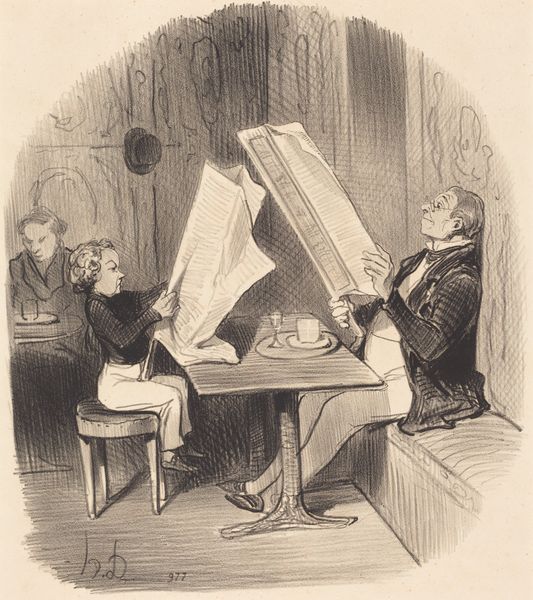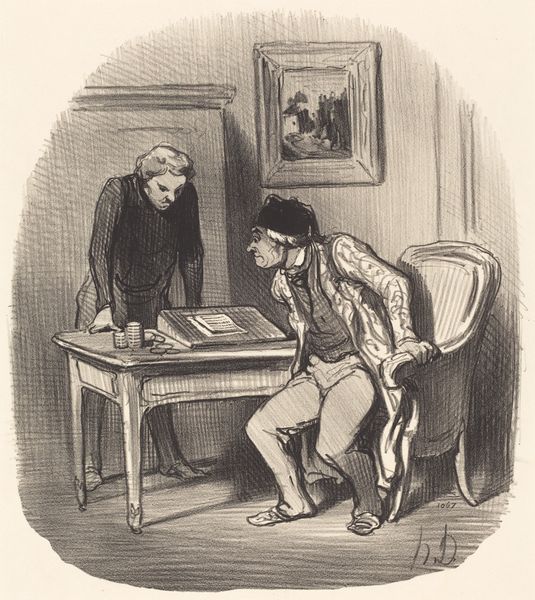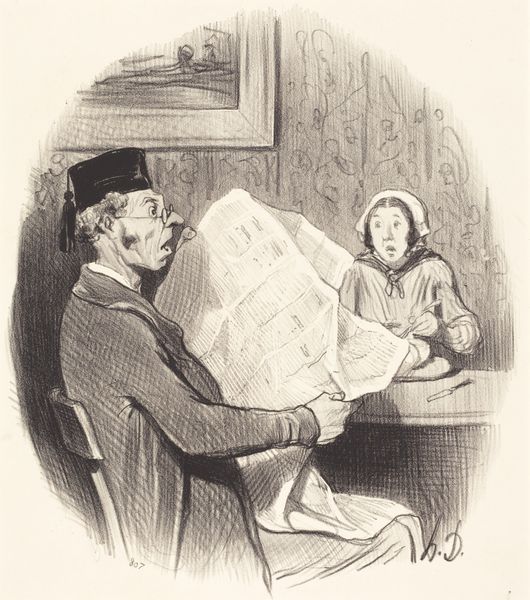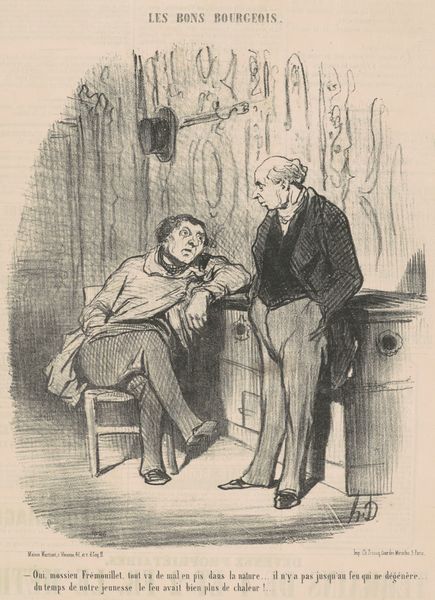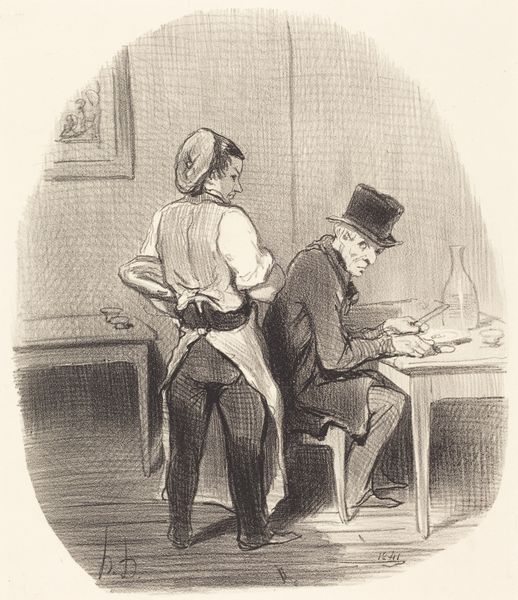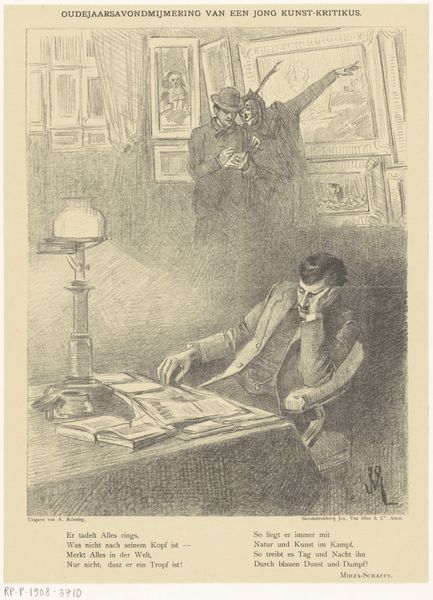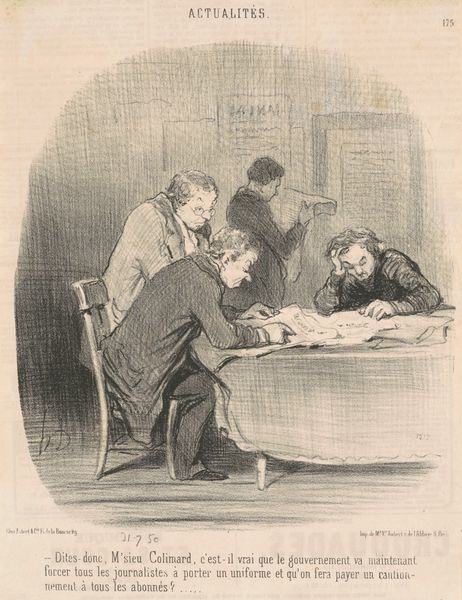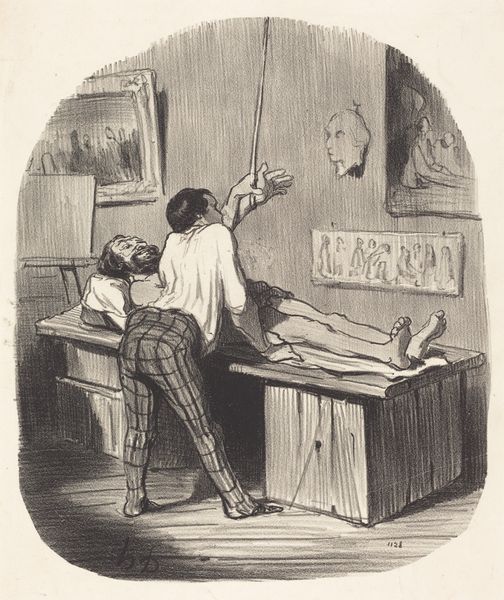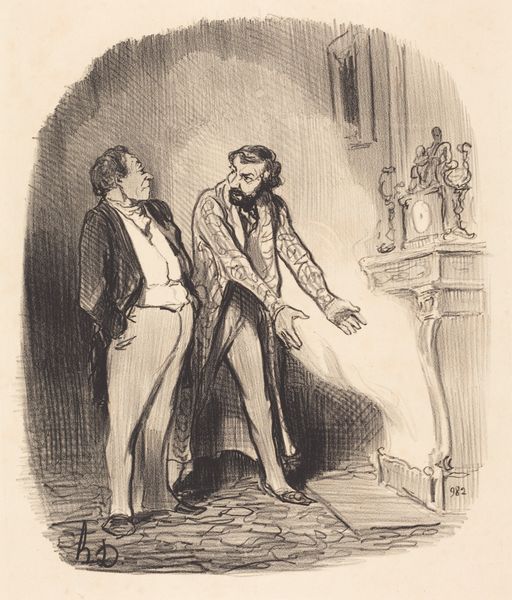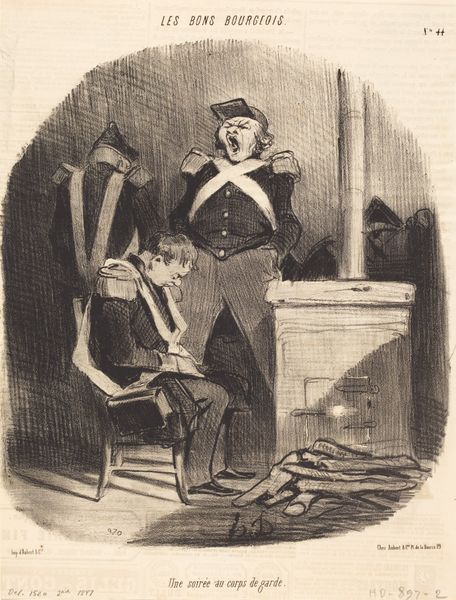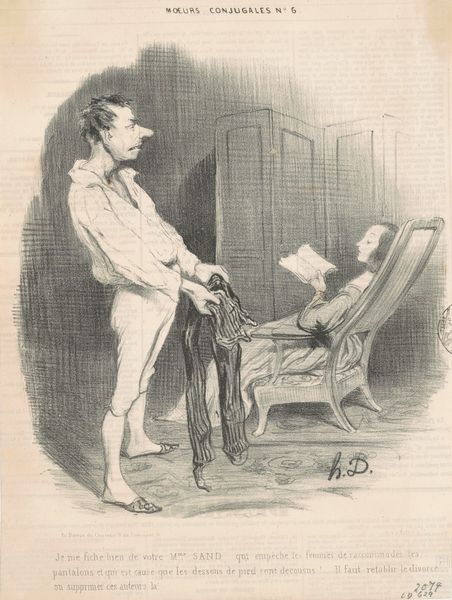
lithograph, print
#
portrait
#
16_19th-century
#
lithograph
# print
#
caricature
#
romanticism
#
genre-painting
Copyright: National Gallery of Art: CC0 1.0
Editor: So this is "Quand le journal est trop intéressant," or "When the newspaper is too interesting," created in 1846 by Honoré Daumier. It’s a lithograph, so a print. It looks like a scene from daily life, but definitely presented as a funny caricature. What catches your eye when you look at this print? Curator: My gaze is drawn immediately to the symbolism embedded in the act of attending to the sleeping man. Notice how one figure supports the reading material while the other intervenes almost invasively. The act speaks to the power of the press in shaping public perception, subtly anesthetizing the subject. Editor: I hadn’t thought of it that way. It seemed like a simple domestic scene. What’s significant about that? Curator: Think of Daumier as chronicler of the rising bourgeois class. The domestic interior, the trappings of comfort, these are symbols of their aspirations. But what happens when intellectual pursuits, like reading the news, become a form of passive consumption, or even a tool for manipulation? Editor: So, you are saying the "interesting newspaper" could be a tool for manipulation? Curator: Potentially. Note how the two figures actively consume the information, then one "force-feeds" or, at least, imposes it onto the other while he rests passively. The cultural memory encoded within such images reminds us to question how information shapes our individual and collective consciousness. Editor: That’s a much deeper reading than I expected. It’s a good reminder to consider the source and intent behind what we consume. Thank you for your insight! Curator: My pleasure! It is important to question the images that define the times, and Daumier delivers a striking point on culture, class, and individual perspective.
Comments
No comments
Be the first to comment and join the conversation on the ultimate creative platform.
